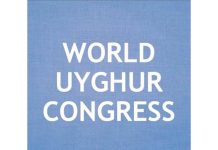In a move that has sparked widespread concern, China has recently banned the teaching and use of the Tibetan language in elementary and middle schools within two Tibetan-populated regions in southwestern Sichuan province. This decision, which mandates the use of Mandarin for all educational communication, poses a significant threat to the preservation of Tibetan culture and language.
The ban has been enforced in government-run schools in the Kardze Tibetan Autonomous Prefecture and the Ngaba Tibetan Autonomous Prefecture. It took effect with the fall semester that began in September, impacting students, teachers, and the entire educational ecosystem in these regions. Here are some key points about this development:
Language Shift: The ban requires that all instruction be conducted exclusively in Mandarin. This shift away from Tibetan threatens the very fabric of Tibetan identity and culture. For generations, Tibetan has been the language of education, literature, and daily life in these regions. Now, it faces the risk of being marginalized and ultimately extinguished.
Endangering Tibetan Culture: Tibetan activists fear that this move could lead to the extinction of the Tibetan language in the affected regions. Moreover, it has broader implications for the viability of Tibetan across the entire country. By prioritizing Mandarin, the Chinese government undermines the rich linguistic heritage of Tibetans and their unique cultural expressions.
Historical Context: The recent ban is part of China’s broader “Sinicization” program, which seeks to assimilate minority cultures into the dominant Han Chinese culture. Despite constitutional protections allowing minority groups to use their own languages in their regions, the reality on the ground paints a different picture. The erosion of language rights affects not only Tibetans but also Uyghurs and other minorities.
Education Standards: The Chinese government claims that this shift to Mandarin is aimed at raising education standards. However, critics argue that it comes at the cost of cultural diversity and linguistic heritage. By prioritizing Mandarin over Tibetan, the authorities risk undermining the holistic development of students.
Soft Atrocities: Instead of using outright force, China employs soft atrocities—gradual measures that erode cultural identity. The suppression of Tibetan language and culture falls into this category. The consequences are far-reaching, affecting not only education but also social cohesion and community bonds.
Voices of Concern
A Tibetan source revealed that middle school students currently enrolled can complete the next two years of studies in Tibetan. However, starting in 2025, all classes will be held in Mandarin. This transition threatens to sever the connection between Tibetan youth and their cultural roots. Teachers, parents, and students are grappling with the implications of this policy shift.
One anonymous source expressed deep concern: “On the pretext of the government’s program, China is trying to completely wipe out the Tibetan language.” The erosion of language rights, coupled with the prioritization of Mandarin, jeopardizes the very essence of Tibetan society and education. There seems to be little room for revival.
Conclusion
As the Tibetan language faces unprecedented challenges, the world must pay attention. The preservation of linguistic diversity is essential for a harmonious and culturally rich global community. The ban on Tibetan in Sichuan province serves as a stark reminder that language is not merely a means of communication; it is a vessel for identity, heritage, and collective memory.
The question remains: Can the Tibetan language withstand the pressures of assimilation, or will it fade into silence? The answer lies in the collective efforts of those who value cultural diversity and recognize the intrinsic worth of every language.








































